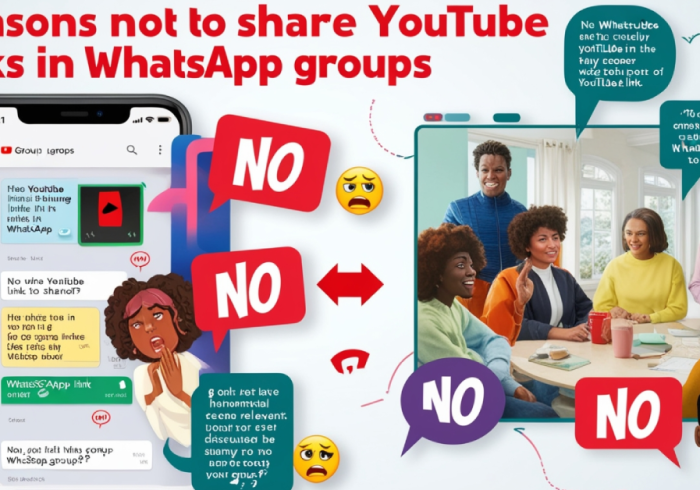If your YouTube views aren’t showing up as expected, it can be frustrating and demotivating. Several factors can cause this, from technical issues to content strategy challenges. Here, we’ll dive deep into common reasons why views may not be accumulating and provide actionable strategies to help fix these issues.
1. YouTube’s Algorithm and Ranking System
- How the algorithm works: YouTube’s algorithm prioritizes content based on a few key metrics, including watch time, engagement, click-through rate, and relevance to users’ search queries.
- Impact on views: If your videos aren’t optimized for these metrics, YouTube’s algorithm may not prioritize them for recommendations or searches, reducing visibility.
Solution
- Optimize for YouTube SEO: Ensure your titles, descriptions, and tags are optimized with relevant keywords. Include a clear, engaging title that captures the essence of the video and a thumbnail that grabs attention.
- Boost engagement: Encourage viewers to like, comment, and share your videos, as these engagement metrics signal to YouTube that your content is valuable.
2. Limited Audience Reach
- Audience targeting: If your content isn’t reaching the right audience, views will likely be low. This can happen if your video content is too broad or if it doesn’t appeal to a specific demographic.
- Audience retention: YouTube measures how long viewers stay on your video. If you lose viewers in the first few seconds, the algorithm may deem your content as low-quality, further limiting its reach.
Solution
- Identify your target audience: Know who your ideal viewer is and tailor your content accordingly. Create videos that cater specifically to their interests and needs.
- Engage in the first 15 seconds: Hook viewers immediately by getting to the main point quickly, offering value upfront, and avoiding lengthy intros.
3. Inconsistent Upload Schedule
- Lack of frequency: Irregular uploads can make it challenging to build a loyal audience and stay visible in YouTube’s algorithm.
- Algorithm impact: YouTube rewards channels that are consistently active, so sporadic uploads may reduce your chances of appearing in recommended videos.
Solution
- Set a consistent schedule: Decide on an upload frequency that’s realistic for you—whether it’s weekly, biweekly, or monthly—and stick to it. Consistent uploads help build trust and predictability with your audience.
- Batch content: Create multiple videos at once and schedule their release to maintain consistency without overburdening yourself.
4. Content Quality and Viewer Experience
- Low-quality production: Poor video or audio quality can be off-putting to viewers and may result in lower engagement and retention.
- Viewer experience: If the video doesn’t offer value, entertainment, or education, viewers won’t stay, and YouTube will rank it lower.
Solution
- Invest in quality: Use clear audio and video, proper lighting, and good editing to improve production quality. This doesn’t require high-end equipment; even smartphones today can produce high-quality videos.
- Focus on viewer value: Ensure every video has a clear purpose—whether it’s to inform, entertain, or inspire.
5. Poor Click-Through Rate (CTR) on Thumbnails and Titles
- Uninspired thumbnails: If your thumbnails don’t stand out, viewers are less likely to click on your video.
- Misleading titles: While a catchy title is crucial, it shouldn’t be clickbait. Misleading titles can result in quick viewer drop-offs, which negatively affects your video’s ranking.
Solution
- Create eye-catching thumbnails: Use bright colors, readable fonts, and a consistent style that aligns with your brand. Custom thumbnails tend to perform better than those auto-generated by YouTube.
- Write compelling, accurate titles: Your title should reflect the content while sparking curiosity. Avoid clickbait and aim for clarity.
6. Limited Engagement and Social Proof
- Low likes, comments, and shares: Social proof is vital on YouTube. A video with high engagement signals value to the algorithm and encourages others to watch.
- Engagement ratio: Videos that receive a lot of interaction relative to their view count are more likely to be recommended.
Solution
- Encourage viewer interaction: Prompt viewers to like, comment, and subscribe. Simple calls to action, like “Let me know in the comments,” can increase engagement.
- Respond to comments: Engaging with your audience in the comments can help foster a community, which boosts repeat viewership and engagement.
7. Technical Issues with YouTube’s Platform
- Delayed view counts: Occasionally, YouTube’s system may take time to process and display view counts accurately.
- Invalid views: YouTube may filter views it considers invalid, such as multiple views from the same IP in a short time or views from suspected bot accounts.
Solution
- Be patient: If views aren’t showing immediately, wait a few hours, as YouTube may be processing data.
- Avoid view-boosting services: These services may provide “bot views” that YouTube will likely discount, which could also negatively impact your channel.
8. Failure to Leverage Social Media and Other Platforms
- Limited promotion: If you’re not actively promoting your videos outside of YouTube, it could be harder to drive initial views, which are important for algorithm visibility.
- Missed cross-platform opportunities: Your audience may not discover your content if it’s limited to YouTube alone.
Solution
- Share on social media: Promote videos on your social media accounts, forums, and groups relevant to your content. Tailor the post for each platform, emphasizing what viewers will gain.
- Build an email list: Email subscribers are often highly engaged and can provide an instant view boost when a video goes live.
9. Ignoring YouTube Analytics
- Lack of data-driven strategy: Without looking at analytics, you won’t know what’s working or where you need to improve.
- Blind spots: Ignoring metrics like audience retention, click-through rate, and watch time means you might miss critical insights that could help boost views.
Solution
- Use YouTube Studio Analytics: Track metrics like audience retention, average watch time, and CTR to understand viewer behavior. This data can help you refine your strategy.
- Experiment based on insights: Use analytics to try new approaches. For example, if analytics reveal high drop-off rates, consider shortening the video or altering the intro.
Final Thoughts
Building and maintaining viewership on YouTube requires consistency, engagement, and an understanding of the platform’s algorithm. Addressing the factors above will help ensure your videos reach a wider audience, improve engagement, and ultimately drive your channel’s growth. Stay patient and committed to providing value, and remember that YouTube success is a marathon, not a sprint.



